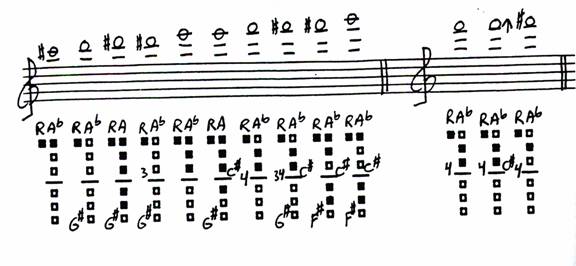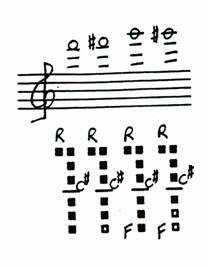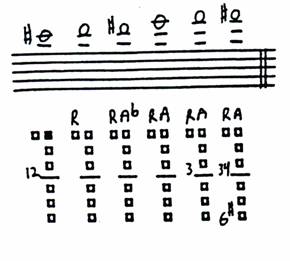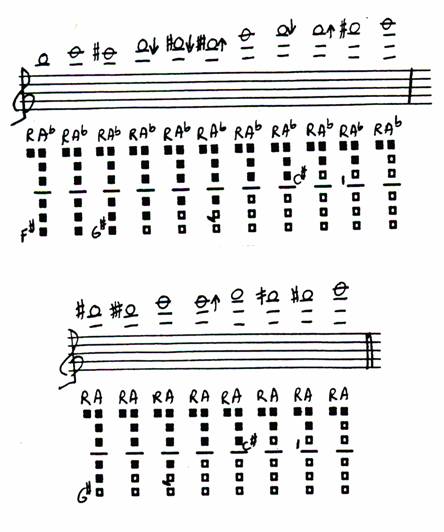| The Clarinet of the Twenty-First Century - E. Michael Richards |
CHAPTER 7 - E-flat Clarinet
Single Sounds -
Altissimo Alternate Fingerings
The American clarinetist Henry Gulick writes of classifications for altissimo register pitches.8 These categories deserve mention, as well as others, in order to understand timbre and resistance characteristics of altissimo fingerings. One classification that is widely employed by professional clarinetists is what Gulick calls "long fingerings." In long fingerings, the first finger of the left-hand remains on the tone-hole; a vent exists further down the clarinet body. As a result, long fingerings require overblowing of lower pitches. The longer tube length that is in play produces thicker, darker timbres that are generally more secure at loud dynamic levels (Example #7).
Example #7 (click on music for mp3)
Altissimo fingerings in a second classification produce pitches from overblown throat tones, without the left thumb covering the back tone hole (Example #8). Since such a short tube length is employed, these pitches tend to be thin and bright.
Example #8 (click on music for mp3)
A third classification includes fingerings that use both the thumb hole and register key as vents (open thumb and depressed register key) (Example #9). These fingerings tend to be a bit dark, but thin. They are especially effective in soft legato passages that link the clarion to altissimo register.
Example #9 (click on music for mp3)
By playing on certain upper partials, fast chromatic figures in the altissimo register can be easily produced (Table #2).
Table #2 (click on measure for mp3)

|
||



